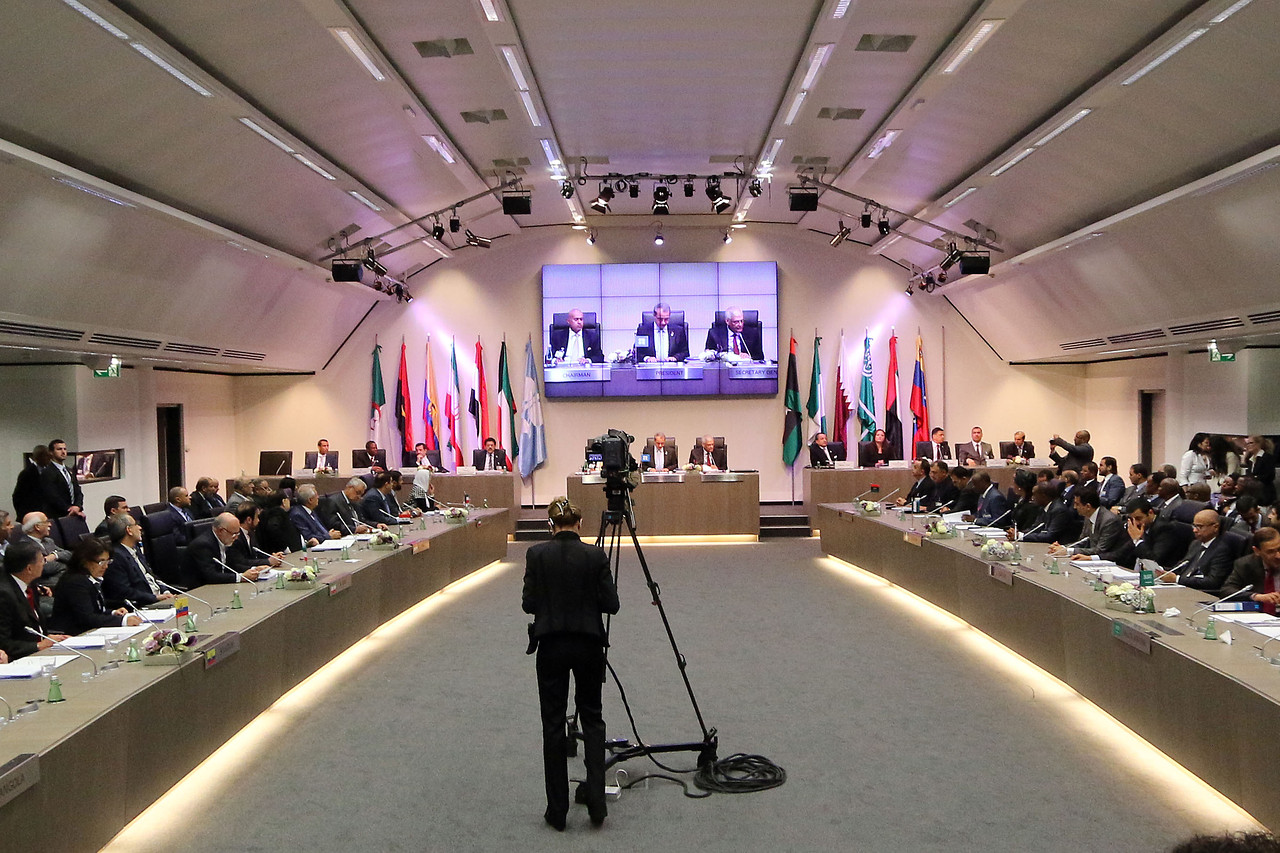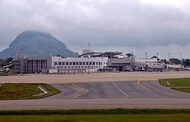A general view of a meeting of oil ministers of the Organization of the Petroleum Exporting countries, OPEC, at their headquarters in Vienna, Austria in June. The ministers meet again on Thursday in one of the most closely watched sessions in years. ASSOCIATED PRESS
OPEC members are inching toward a compromise that could lead them to cut oil supply, as the producer group this week prepares for one of its most closely watched meetings in years.
Saudi Arabia, the de facto leader of the Organization of the Petroleum Exporting Countries, is likely to side with calls for the group to adhere more closely to its self-imposed production ceiling at Thursday’s meeting of OPEC oil ministers, according to a Gulf official familiar with the Saudi position.
Support for such a move, which would be based on tighter compliance with OPEC’s existing output limit as opposed to an outright cut to its production target, was coalescing last week at a meeting of OPEC advisers, according to several of those present. With oil prices having recently stabilized at around $80 a barrel following a 30% slide since the summer, some within OPEC have seen less urgent need for the group to take stronger action.
But as late as last week the Saudis’ likely approach at Thursday’s meeting was unclear to most members.
The Journal has documented the divisions inside OPEC as it struggles with falling oil prices
“Saudi Arabia will likely go for a rollover” of the current ceiling, the Gulf official said on Tuesday. A call for strict compliance would be “an option they would go for.” But Riyadh’s intentions haven’t been clearly telegraphed to other members, and it could decide to go a different route by the time of the Thursday meeting.
OPEC members have engaged in an unusually frantic round of shuttle diplomacy ahead of this week’s gathering, with some poorer countries calling for deep supply cuts to boost oil prices. Brent crude slid 1.2% to $78.53 a barrel on Tuesday after a meeting among Saudi Arabia, Venezuela and non-OPEC members Russia and Mexico resulted in no agreement to cut oil production.
OPEC agreed to limit its collective output to 30 million barrels of oil a day three years ago. But its actual production has regularly spilled over as each member has pushed to maintain their share of global oil markets. Closer compliance would imply a supply cut of around 300,000 barrels of oil a day compared with October levels, according to OPEC technocrats who met last week.
UAE energy minister Suhail Mohamed Al Mazrouei in Vienna on Tuesday. ENLARGE
UAE energy minister Suhail Mohamed Al Mazrouei in Vienna on Tuesday. AGENCE FRANCE-PRESSE/GETTY IMAGES
By some distance OPEC’s largest oil producer, Saudi Arabia has been unusually reticent in the run-up to this week’s meeting. Its oil minister Ali al-Naimi refused to answer questions about the country’s stance when he arrived in Vienna on Monday.
The kingdom appears reluctant to bear the brunt of any OPEC action on its own. Earlier this month Mr. al-Naimi told Venezuela’s foreign minister Rafael Ramirez that the kingdom wouldn’t cut its oil output alone, according to people familiar with the matter.
But a supply cut of around 300,000 barrels a day is unlikely to satisfy some OPEC members, such as Venezuela and Iran, who need oil prices well above $100 a barrel to balance their government budgets.
OPEC has, in the past, taken far more drastic action to boost oil prices. It slashed production quotas by 4.2 million barrels a day in 2008 following the global financial crisis. An OPEC production cut of around 1.5 million barrels would be needed to tighten global oil markets next year, according to oil analysts at Barclays .
Current oil prices “aren’t acceptable, of course not,” Iraq’s oil minister Adel Abdul-Mehdi told reporters upon arriving in Vienna. “A means should be used to raise the prices,” he said.
But officials from Persian Gulf countries, which can generally balance their budgets with lower prices, are concerned deep output cuts would prove self-defeating as any rise in oil prices would only encourage further U.S. shale oil production. OPEC members could then lose market share and higher prices would “make it easy” for the U.S. to pump more, one Gulf oil official said.
U.S. shale oil producers need oil prices in the range of $53 to $78 a barrel to break even, meaning most are profitable even with prices at their current level, according to estimates presented at an OPEC technical meeting last week.
Another problem for OPEC is sagging global oil demand growth, especially in key Asian markets like China. Industrialized countries also have increasing amounts of oil in reserve, with inventories on average high enough to cover 59 days of consumption in the first half of next year compared with a normal average of around 53 to 54 days, according to OPEC officials.














